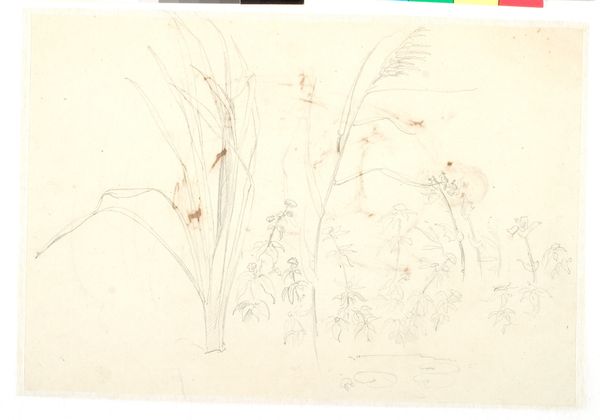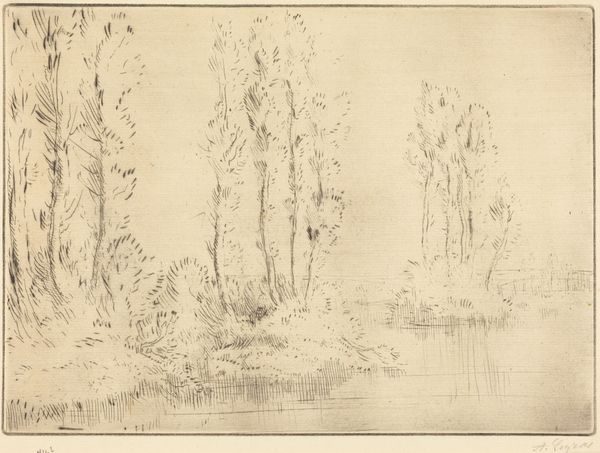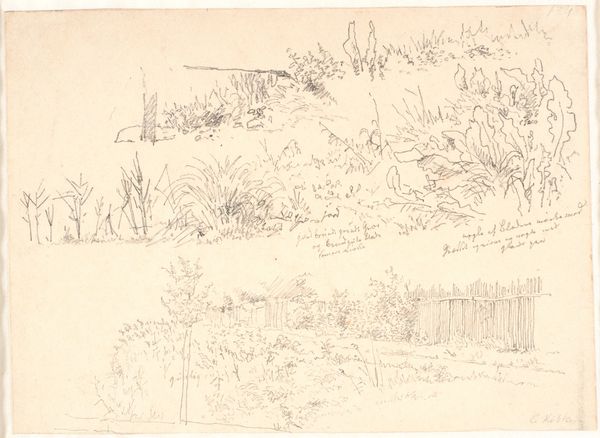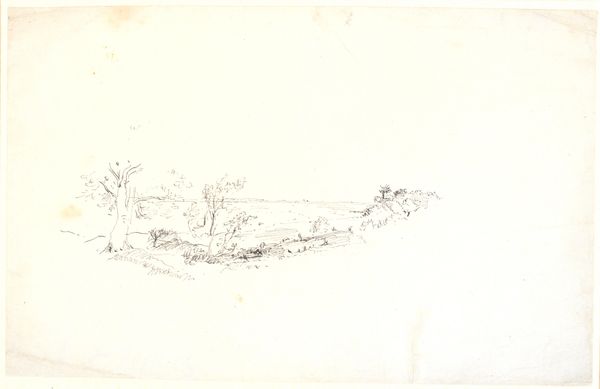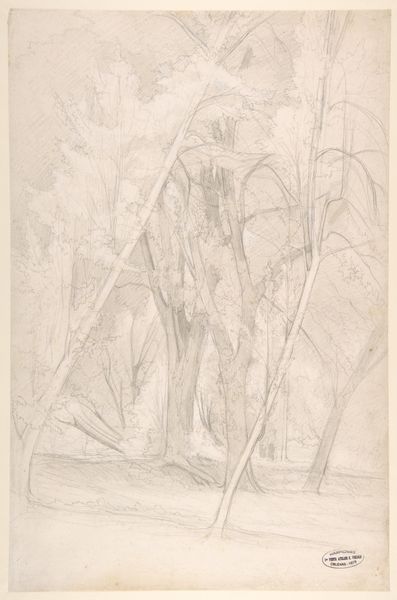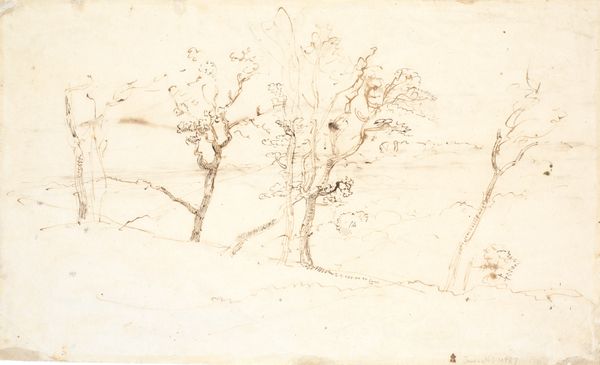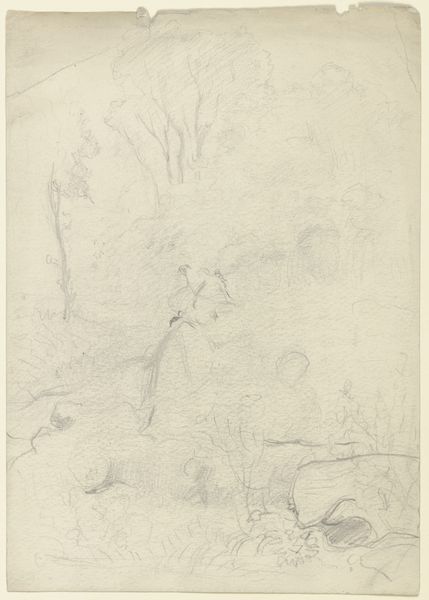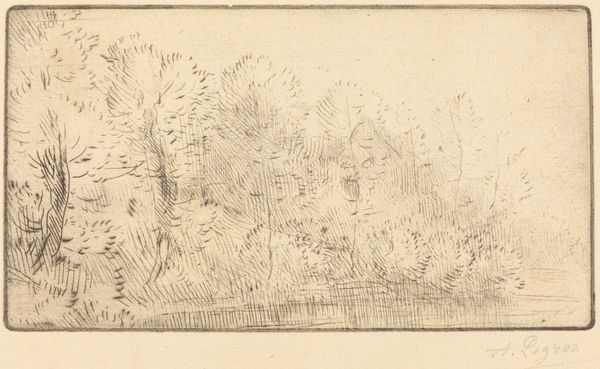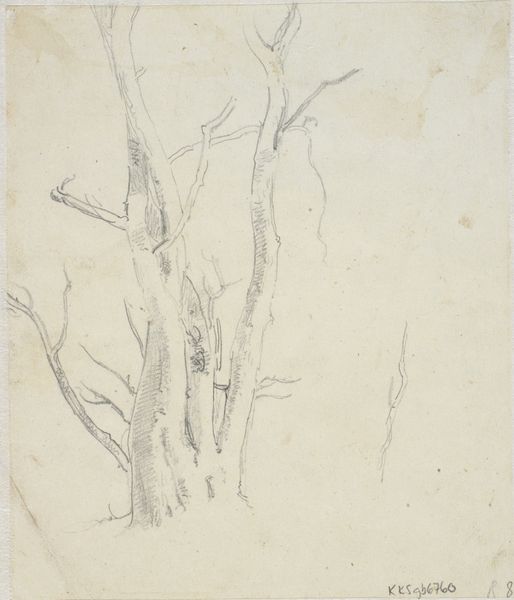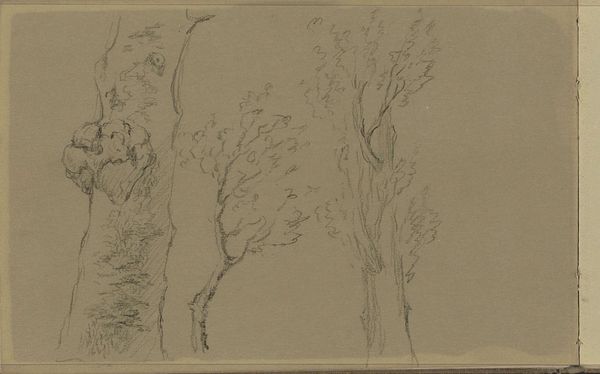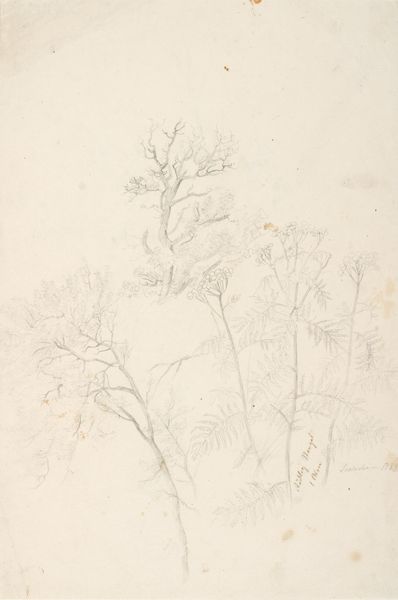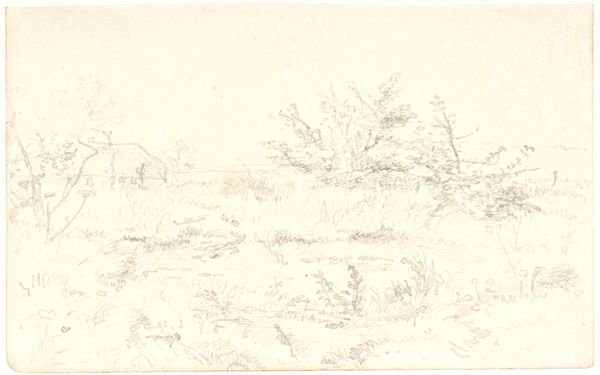
drawing, pencil
#
drawing
#
landscape
#
etching
#
pencil
#
realism
Dimensions: 173 mm (height) x 315 mm (width) (bladmaal)
Editor: Here we have Dankvart Dreyer’s “Plantestudier,” created sometime between 1831 and 1852 using pencil. It’s a delicate drawing, quite understated in its realism. What catches your eye, or rather, how do you interpret its seemingly simple depiction? Curator: It's interesting to consider this work within the context of 19th-century Danish art. While the Golden Age painters focused on idealized landscapes, Dreyer, with this intense study of individual plants, engages in a different kind of observation. Doesn’t this intimate, almost scientific scrutiny remind you of the detailed botanical illustrations becoming popular at that time? It reflects an emerging public interest in natural sciences, influencing how artists saw their role in representing the world. Editor: Yes, I see your point. It’s less about romanticizing nature and more about understanding it on a granular level. But how does a seemingly private study like this intersect with broader social or institutional narratives? Curator: Think about the Royal Danish Academy of Fine Arts, where Dreyer trained. Emphasizing drawing as a foundational skill, enabling artists to meticulously record and classify visual information. This type of plant study would hone that ability. Now consider the rise of public museums during that period. Scientific collections and art were frequently intertwined. Botanical drawings contributed both to artistic and scientific knowledge accessible to an expanding public, educating as well as inspiring aesthetic appreciation. This kind of seemingly simple drawing became a tool for understanding the natural world. Editor: I never thought about it that way, but this close observation as a political statement, or at least a socially conscious one, it really challenges my initial perception of the drawing. Curator: Indeed. It also reminds us that even the smallest artworks carry layers of historical and cultural significance. Editor: I see art history shaping everything we consider “art”. Thank you, this really made me think!
Comments
No comments
Be the first to comment and join the conversation on the ultimate creative platform.
